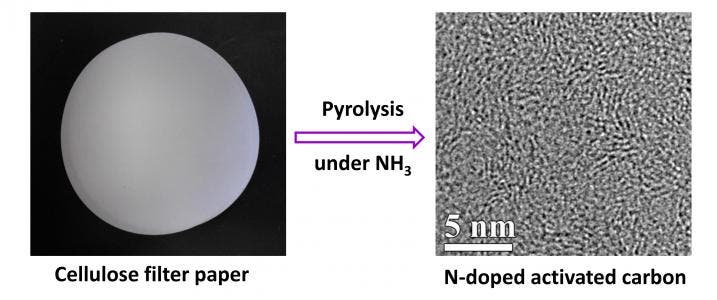When you think of timber technology, the first things that come to mind may be constructing homes, wooden tools and, of course, paper. Oregon State University researchers have found, however, that trees could be employed in a process that produces building blocks for supercapacitors – high tech energy storage devices that are considered paramount for the future’s energy needs and applications.

Scientists found that cellulose , which is the most abundant polymer on Earth found in high concentration in trees, can be heated in a furnace in an anaerobic environment (no oxygen – this process is called pyrolysis) with ammonia present, to produce nitrogen-doped, nanoporous carbon membranes – the electrodes of a supercapacitor. The method is quick, low cost and environmentally benign. The only byproduct is methane, which can be then used as a fuel, either in a fuel cell for less carbon emission, or directly burned alone in a heat engine.
What’s truly remarkable is the simplicity of the thermochemical process. The team involved was really stoked to find that nobody else had reported this fundamental chemical reaction. Wood is extremely cheap and readily available, but few could think of any way to make it into a high tech material.
Supercapacitors are extremely important for filling the world’s energy demands of the future. Like a battery, supercapacitors can store vasts amount of energy, only they can charge and discharge incredibly fast, making them particularly useful in computers and consumer electronics, such as the flash in a digital camera. Where they truly can fill their potential is in heavy industry applications. A wind farm produces enormous quantities of energy, but this supply tends to be intermittent and unreliable. Using huge supercapacitors, megawatt or gigawatt sized wind turbines could be stabilized and ensure base-load.
We could go on forever about the potential applications of supercapacitors, but what brings them down is cost. The Oregon State University researchers demonstrated how to build a key component for supercapacitors easily, cheaply and fast. If supercapacitor cost can be brought down considerably, as a result of findings such as the high tech tree solution, then society might reap great benefits.
The findings were reported in the journal Nano Letters.


